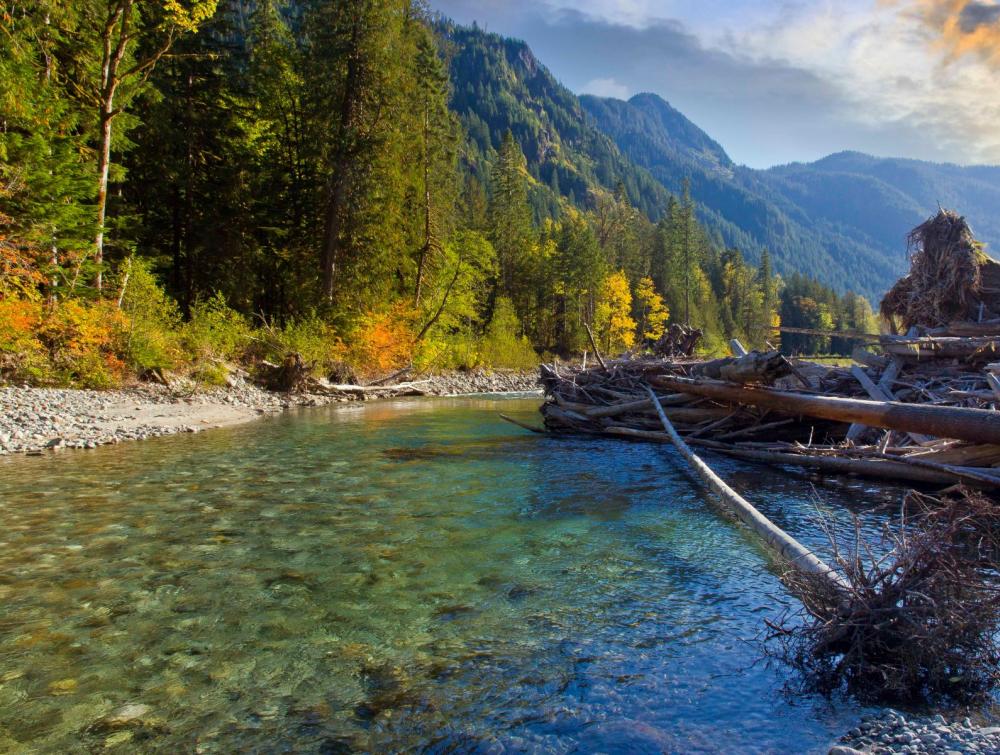Forest Service announces Northwest Forest Plan federal advisory committee membership

Mount Baker-Snoqualmie National Forest, WA
Andy Porter
Committee will provide consensus advice regarding climate-smart forest management within range of the northern spotted owl
Today, the US Forest Service announced the long-awaited membership of the Federal Advisory Committee that will provide advice and recommendations for sustainable, climate-adapted, wildfire-resilient landscape management across the Northwest Forest Plan area, which encompasses 19 million acres of federal forest lands in Washington, Oregon and Northern California.
The announcement follows other big steps forward in old growth protection efforts by the administration, including President Biden’s Earth Day 2022 Executive Order to preserve and protect old growth forests, the Forest Service’s premiering of a historic inventory of mature and old growth forests across various forest types on public lands, and April announcement of an upcoming Advance Notice of Proposed Rulemaking, intending to boost climate resilience across the nation’s forest lands.
The Northwest Forest Plan region has an outsized role to play in mitigating the worst impacts of climate change by storing immense amounts of carbon in mature and old forests.
“I’ve been working on national forest policy and management since the Northwest Forest Plan’s inception, including on the Plan itself, and I’m thrilled to be able to contribute to updating the Plan as part of the federal advisory committee,” said Mike Anderson, Senior Policy Analyst at The Wilderness Society. “We’re facing different challenges from 30 years ago when the Plan was created, so I’m eager to help build on the strong foundation it provides, incorporate the same commitment to sound science – from ecology to climate to economics to local and Indigenous knowledge – and support the Forest Service to make the Northwest Forest Plan a successful, lasting tool for communities while playing an ever more important role in combating the climate and extinction crises by maintaining robust and healthy forests.”
“I’m pleased to have been selected as a member of the Northwest Forest Plan federal advisory committee,” said Susan Jane Brown, Principal of Silvix Resources. “I look forward to collaborating with my fellow committee members to provide advice to the Forest Service regarding old forest conservation, addressing the climate and biodiversity crises, and reducing wildfire risk within the range of the northern spotted owl.”
The Forest Service has observed that “significant changes in ecological and social conditions across the Northwest Forest Plan area require the US Forest Service and its partners to evaluate existing management direction and consider new approaches to meet the intent of the NWFP, manage for landscapes that are adapted to climate change and resilient to wildfire, and provide for increasing use of and demands from national forest system lands.” The new Committee will assist the Forest Service in addressing these challenges.
The complete committee membership is available here.
Background
The Northwest Forest Plan is a federal land management plan developed by a large team of scientists and adopted by the Clinton administration in 1994 to resolve intense controversy over logging of old-growth and riparian habitat in the Pacific Northwest within the range of the northern spotted owl. It aimed to provide enough habitat to conserve all species that rely on old-growth forest habitat, as required by law, including well-known imperiled species such as the Chinook and Coho salmon.
The Plan amended forest management plans for 19 national forests administered by the U.S. Forest Service covering 19.4 million acres in Washington, Oregon, and Northern California, along with 7 Bureau of Land Management districts covering 2.7 million acres in Western Oregon and Northern California. It was widely praised for its scientific and ecosystem-based approach toward forest management, and effectively protected most of the region’s remaining old-growth forests and riparian habitat from logging.
Today, some of the biggest challenges national forests and communities that depend on them (both near and downstream) face are around the issues of fire, climate disruption, growing tourism and recreation, diversifying economies and the stability of water resources. As the Forest Service prepares to update the Northwest Forest Plan to meet the challenges of the 21st century, it has big opportunities to improve the Plan by using the best available information from a broad array of sources: ecology, climate, economics, health, sociology, political science and traditional community and Indigenous knowledge.
Congress enacted the Federal Advisory Committee Act (FACA) in 1972 to ensure that advice by the various advisory committees formed over the years is objective and accessible to the public. A committee’s charter establishes the purpose and scope of a FACA committee. FACA committee meetings are open to the public and membership must be fairly balanced in representation. FACA committee membership is made by the president or agency/departmental head; in this case, Secretary of Agriculture Tom Vilsack.
CONTACT
Mike Anderson, The Wilderness Society, (206) 890-3529, michael_anderson@tws.org
Susan Jane M. Brown, Silvix Resources, (503) 680-5513, sjb@silvix.org
